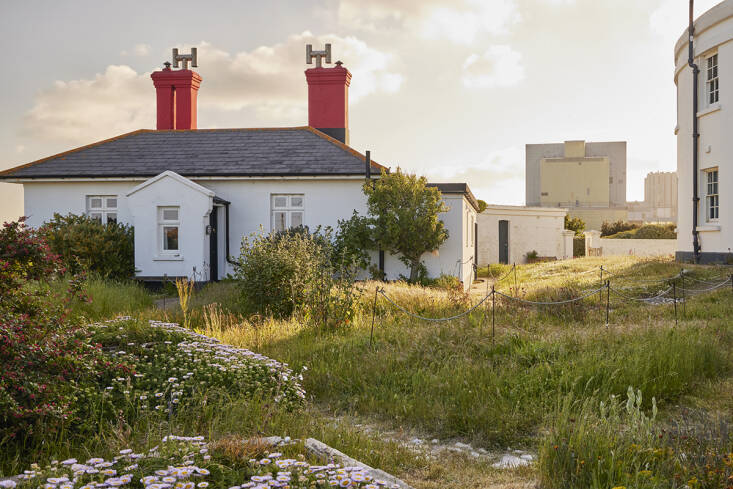Dungeness, on England’s south coast, is an almost impossible idea, the kind of place that could only be concocted by the British. Although it is a desirable destination, with the likes of Ed Sheeran buying property here, it is not “posh” exactly. Most of the houses are converted railway carriages or fisherman’s cottages—like filmmaker Derek Jarman’s Prospect Cottage, tarred in black with bright yellow windows, just as it was when he found it in the 1980s (and paid £750 for it). The charm of Dungeness is partly due to the fact that the whole estate is privately owned, with strict rules about buildings and fences, with all of it comprising a national nature reserve. But the things that should work against it, extreme wind, desert sun, pebbles for miles, and even a 1960s nuclear power station, are the things that win you over.
Creative thinkers have done well here: Derek Jarman made a garden despite the odds, and the artist and writer Martin Turner, who bought the Round House at auction in the early ’90s, made a comfortable home out of a building that was completely round, and lacking in electricity or water. He was delighted to have the space after living in Hackney, London, and what he lacked in funds he made up for with hard work, and fabulous taste. His daughter, Kathryn Morris, continues his legacy and has recently refurbished the two lighthouse keeper’s cottages, both of which are now available as holiday lets. We stayed in one of them:
Photography by Caitlin Atkinson for Remodelista.

There have been many shipwrecks around Dungeness, where the waters of the North Sea and the Channel merge, near a promontory of ever-increasing shingle (pebbles). Dungeness Old Lighthouse, overlooking the cottages and the Round House, went out of commission in 1960 when the nearby nuclear power station was built (which is now being decommissioned itself). It is open during school holidays and weekends, and is worth climbing the 169 steps for a view over the peculiar republic that is Dungeness.



